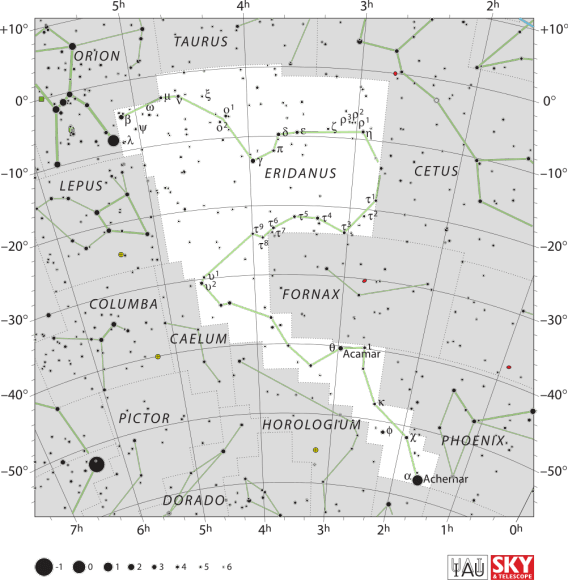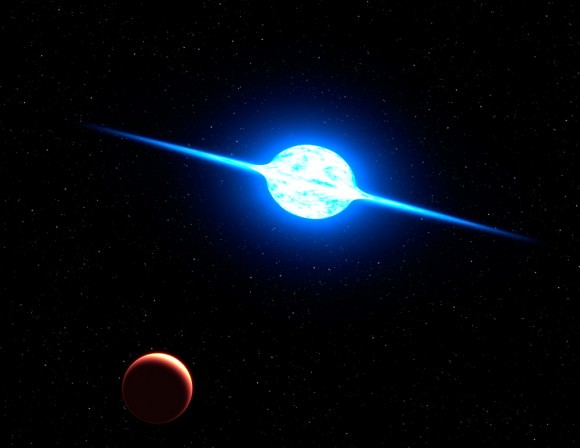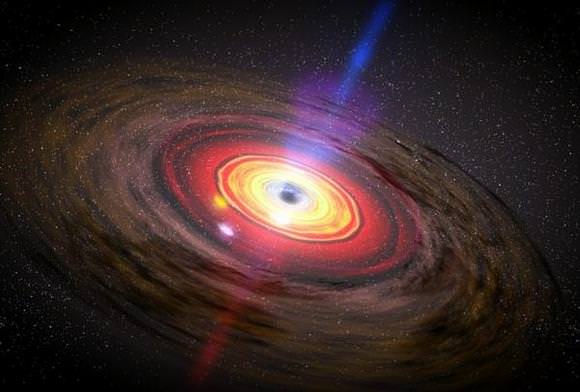Everything in the Universe is spinning. Spinning planets and their spinning moons orbit around spinning stars, which orbit spinning galaxies. It’s spinning all the way down.
Consider that fiery ball in the sky, the Sun. Like all stars, our Sun rotates on its axis. You can’t tell because staring at the Sun long enough will permanently damage your eyeballs. Instead you can use a special purpose solar telescope to observe sunspots and other features on the surface of the Sun. And if you track their movements, you’ll see that the Sun’s equator takes 24.47 days to turn once on its axis. Unlike its slower poles which take 26.24 days to turn.
The Sun isn’t a solid ball of rock, it’s a sphere of hot plasma, so the different regions can complete their rotation at different rates. But it rotates so slowly that it’s an almost perfect sphere.
If you were standing on the surface of the Sun, which you can’t, of course, you would be whipping around at 7,000 km/h. That sounds fast, but just you wait.
How does that compare to other stars, and what’s the fastest that a star can spin?

A much faster spinning star is Achenar, the tenth brightest star in the sky, located 139 light-years away in the constellation of Eridanus. It has about 7 times the mass of the Sun, but it spins once on its axis every 2 days. If you could see Achenar up close, it would look like a flattened ball. If you measured it from pole to pole, it would be 7.6 Suns across, but if you measured across the equator, it would be 11.6 Suns across.
If you were standing on the surface of Achenar, you’d be hurtling through space at 900,000 km/h.
The very fastest spinning star we know of is the 25 solar mass VFTS 102, located about 160,000 light-years away in the Large Magellanic Cloud’s Tarantula Nebula – a factory for massive stars.
If you were standing on the surface of VFTS 102, you’d be moving at 2 million km/h.
In fact, VFTS 102 is spinning so quickly, it can just barely keep itself together. Any faster, and the outward centripetal force would overcome the gravity holding its guts in, and it would tear itself apart. Perhaps that’s why we don’t see any spinning faster; because they couldn’t handle the speed. It appears that this is the fastest that stars can spin.

One other interesting note about VFTS 102 is that it’s also hurtling through space much faster than the stars around it. Astronomers think it was once in a binary system with a partner that detonated as a supernova, releasing it into space like a catapult.
Not only stars can spin. Dead stars can spin too, and they take this to a whole other level.
Neutron stars are what you get when a star with much more mass than the Sun detonates as a supernova. Suddenly you’ve got a stellar remnant with twice the mass of the Sun compressed down into a tiny ball about 20 km across. All that angular momentum of the star is retained, and so the neutron star spins at an enormous speed.
The fastest neutron star ever recorded spins around 700 times a second. We know it’s turning this quickly because it’s blasting out beams of radiation that sweep towards us like an insane lighthouse. This, of course, is a pulsar, and we did a whole episode on them.
A regular star would be torn apart, but neutron stars have such intense gravity, they can rotate this quickly. Over time, the radiation streaming from the neutron star strips away its angular momentum, and it slows down.

Black holes can spin even faster than that. In fact, when a black hole is actively feeding from a binary companion, or a supermassive black hole is gobbling up stars, it can rotate at nearly the speed of light. The laws of physics prevent anything in the Universe spinning faster than the speed of light, and black holes go right up to the edge of the law without breaking it.
Astronomers recently found a supermassive black hole spinning up to 87% the maximum speed permitted by relativity.
If you were hoping there are antimatter lurking out there, hoarding all that precious future energy, I’m sorry to say, but astronomers have looked and they haven’t found it. Just like the socks in your dryer, we may never discover where it all went.


The real question is not how fast but why are they spinning at all???? The answer is starting to become very clear…..the rotation is driven by powerful magnetic fields. Massive electric currents are now documented to enter and exit stars and the actual star formation is due to the constriction of these currents within plasma double layers by their concomitant magnetic fields. This area of constriction is well known in the field of electrical engineering as a “Z Pinch”.
It is time to view current observations from an electromagnetic viewpoint. This view provides common sense answers that can occur within the known laws of physics. It is also time to break away from the failing gravitational models that explain nothing and require mystical, unobserved phenomenon (i.e. dark matter) that defy the known laws of physics.
Something seems to be missing from your last paragraph. Otherwise, thanks for another informative article!
I really enjoyed your video. it’s important to have a youtube presence these days.
Dear btraymd,
It is time to go to almost any science museum.
There will usually be a display to teach children about space-time, and what a gravity well is.
To raise funds “to keep the doors open” the children can put coins into the well, and see what happens.
Any coin that has a path (“entry vector”) that does not point directly at the centre of the well begins to rotate around the centre of the well.
This rotation does not require dark matter for an explanation.
Now, about stars.
When we research the sun (our Star) we find that there is massive churning in the plasma cause by the heat of the fusion reaction in the centre of the sun.
This generates the massive plasma motion necessary to generate the massive magnetic fields that result in the mass coronal ejections and high electric currents.
In simple English. The heat released by the fusion reaction comes first, and is the cause of what we observe.
Note: The cross sectional area of hydrogen is fixed(as measured in Barnes), so any combination of temperature and density that is high enough will result in a fusion reaction.
No “Z-pinch” is necessary.
Not sure why you switched from kph to rps, but that makes it hard to compare the rotation of neutron stars to other stars.
700 rps x 60 sec x 60 min x 20 km diameter x pi
= 158,336,269.741 kph
If the diameter is 30 km it is 237,504,404.611 kph
Thanks for doing the math for me my man! My small brain doesn’t like big numbers!
Thanks for the figures, Thomas77. Using those speeds, the velocity (v)for a point on the surface of these objects: d= 20 km, v= ~15% light speed (c); d= 30 km, v = ~22% c. @_@ I think I’m gonna go with a slightly subdued “wooow” while I wait for my brain’s heat-sinks to catch up.
One certainly begins to appreciate the need for “frame-drag” calculations around even non-black hole objects, given those types of numbers.